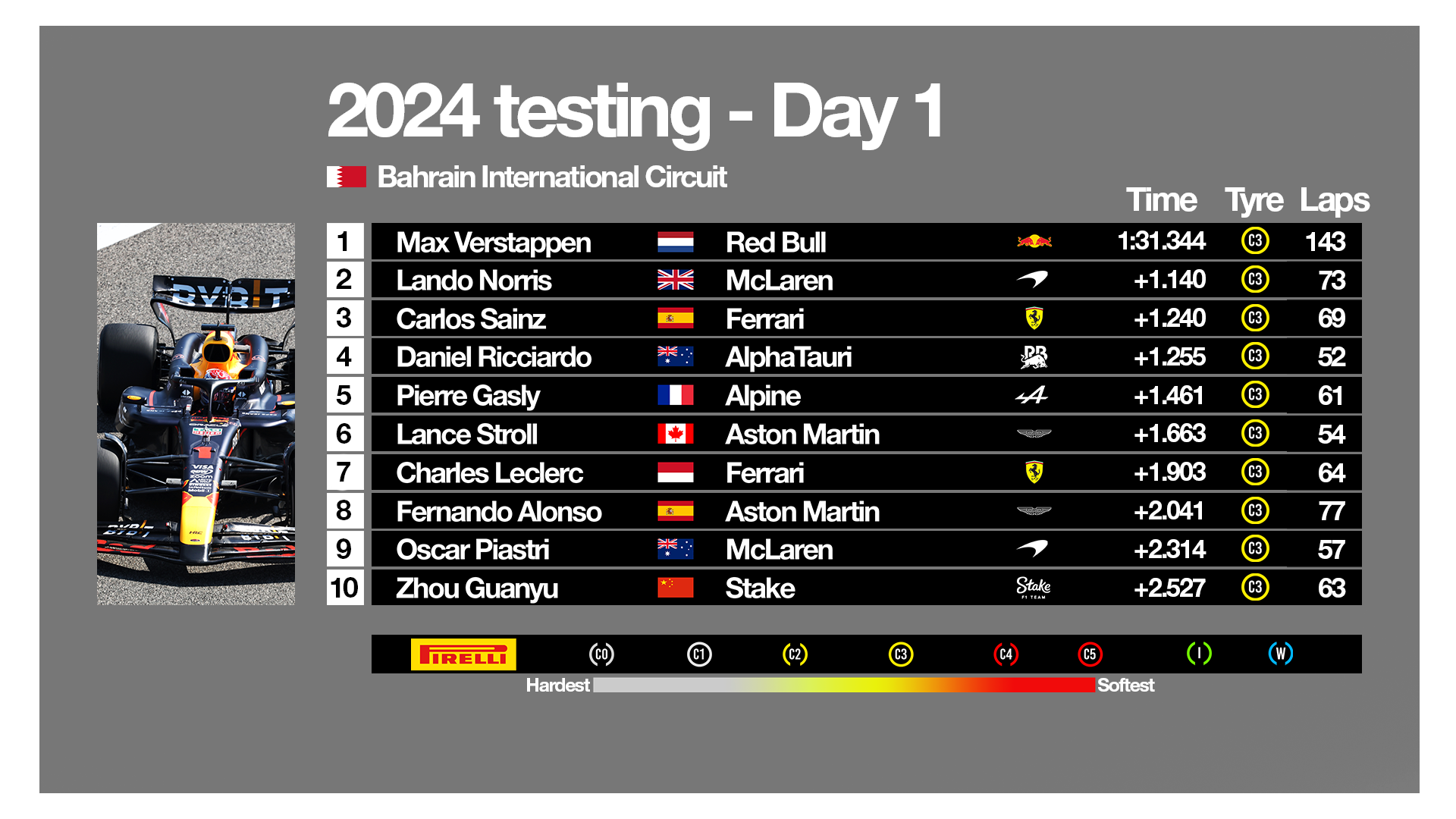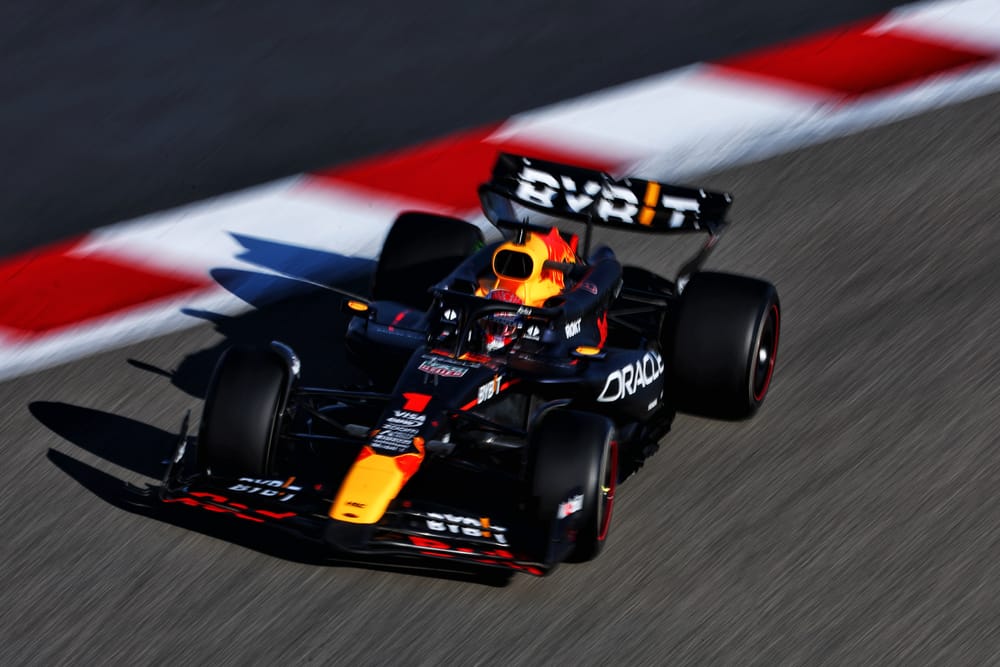Up Next

Max Verstappen and Red Bull were fastest for the overwhelming majority of the first 2024 Formula 1 pre-season test day and ended it over a second clear of the opposition.
That's despite Red Bull bringing a substantially changed design to the track this year rather than just evolving the car that crushed the field throughout 2023.
Was Wednesday a sign Red Bull might somehow be even harder to beat in 2024? Mark Hughes gave his take on day one pace - and those Verstappen laptimes in particular - on The Race F1 Podcast.
Here's what he had to say:
The caveat to Verstappen's headline pace

If you take the fact he was fastest seriously, it’s a good indication that the radical-looking Red Bull RB20 is not some fiendishly overly complicated beast that the team is going to struggle to get the best from.
Aside from a few wayward moments early in the morning on the hard compound tyres, the car appeared to be nicely balanced, riding beautifully over the bumps which were upsetting even the best of its rivals.
But we shouldn’t take the margin advantage too seriously, not at this stage anyway. Because when Verstappen first put on a set of the medium compound C3 tyres, although he went to the top of the timesheets, his margin over Fernando Alonso’s Aston Martin was only three tenths.
Shortly afterwards Charles Leclerc came out on a new set of C3s on his Ferrari, and despite spoiling his first flyer with a lockup, he managed to get within two tenths of Verstappen’s benchmark on tyres that by then had done three laps.
But that was the last time we had a meaningful comparison to Verstappen because Ferrari, Aston and Mercedes were concentrating on higher fuel long runs in the morning while Red Bull continued to finesse the balance of its car over a series of shorter runs. It then gave Verstappen another opportunity just before the break in which he knocked a further four-tenths off his time.

In the afternoon, as the lower temperatures and building rubber layer made the track progressively quicker, Verstappen made another three low-fuel attempts and unsurprisingly was way quicker than in the morning. His final 1m31.344s was around 1.5s faster than he went in the equivalent session last year.
So Red Bull looks totally in control of its programme, the car seems to go as well as it looks, but the margin superiority suggests the better laptimes are also a product of Verstappen having five serious attempts at a fast time compared to one each for Alonso and Leclerc and two for McLaren’s Lando Norris who ended up as second fastest overall.
The question mark over Red Bull's pace

When we talk of low fuel, there will be differences between the teams at the base weights chosen, just as there will be with engine modes, all they can do is attempt an order of magnitudes of similarity by the length and timing of the runs and the chosen tyres.
We have no way of knowing how much Verstappen’s improvement from the morning, when he was only a couple of tenths faster than a highly compromised Leclerc was, from having lowered the fuel load further or extended the PU harder.
We do know that the track was significantly faster as suggested by a comparison between Leclerc’s morning best and Sainz’s afternoon, which was seven-tenths faster.
What about the rest?

McLaren, like Mercedes, suffered a slow start in taking to the track. But once his car was sorted in the afternoon, Norris quickly got into the groove and got within half a second of Verstappen’s morning time on his first attempt at a low fuel time.
On his next run, with another new set of C3s, he improved and eclipsed Verstappen’s morning time by a tenth, but that was quickly beaten and put into perspective by the subsequent three Red Bull attack runs, all of which were quicker than McLaren.
Carlos Sainz took over from Leclerc at Ferrari and lapped within a tenth of the McLaren.
Ferrari, Aston Martin and McLaren look quite evenly matched when comparing like with like in terms of timing, tyres and length of runs, certainly too close to try and differentiate them at this early stage.
Sainz ran a nine-lap sequence on C3s which averaged less than a tenth slower than Norris’ 10-lap run at the same time on the same tyre.
Mercedes's long-run focus

Mercedes ran a more conservative programme with George Russell based around multiple long runs, some of them on the harder C1 and C2 tyres.
Its place in the headline times is wildly pessimistic but with not enough data to make a comparison with Ferrari, McLaren and Aston.
The RB team ended up fourth fastest on headline numbers after several Daniel Ricciardo attempts on C3s, with Pierre Gasly’s Alpine within a couple of tenths of that despite having concentrated most of its early running on the hard tyres.
Sauber and Williams look quite closely matched with Haas bringing up the rear.
That’s the very rudimentary picture from day 1 in Bahrain.




